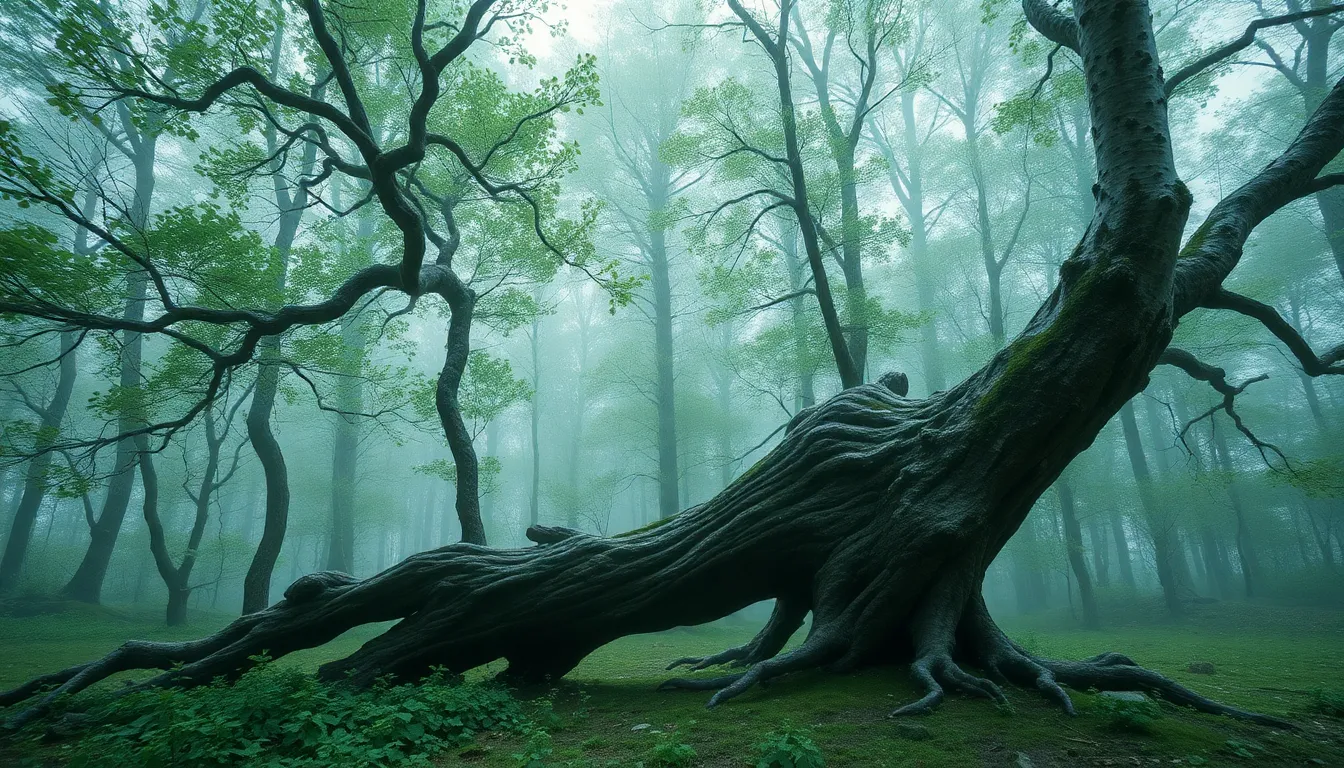The Sacred Birch: Myths of Protection and Purity
1. Introduction to the Sacred Birch
The birch tree, with its striking white bark and delicate leaves, has held a special place in the hearts and minds of various cultures throughout history. In many traditions, the birch symbolizes new beginnings, renewal, and protection. Its presence in mythology and folklore is profound, often representing a bridge between the physical and spiritual realms. From the ancient Celts to Indigenous tribes in North America, the birch has been revered not only for its beauty but also for its protective qualities and associations with purity.
2. Historical Context of the Birch Tree
The birch tree has been utilized by numerous civilizations for millennia. Ancient peoples recognized the birch for its versatility and resilience, using its wood for tools, shelter, and crafting. The bark, known for its waterproof qualities, was used to make containers, canoes, and roofing materials.
In addition to practical uses, the birch tree played a significant role in traditional medicine. Its sap was harvested in spring, consumed for its nourishing properties, and the leaves and bark were used in herbal remedies. Rituals surrounding the birch often involved its use in healing ceremonies, emphasizing the tree’s integral role in the spiritual and physical well-being of various cultures.
3. Symbolism of Protection in Birch Myths
The birch tree is often viewed as a protective symbol across different cultures. In Slavic mythology, birch trees were believed to ward off evil spirits and bring blessings to homes. Similarly, in Celtic traditions, birch was associated with the goddess Brigid, who represented protection, healing, and fertility.
- Slavic Tales: In Slavic folklore, birch branches were used to create protective charms that were hung above doorways, ensuring safety from malevolent forces.
- Celtic Rituals: The Celts celebrated the birch during their festival of Imbolc, invoking its protective energy for the coming year.
These myths and legends highlight the birch’s protective qualities, reinforcing its status as a guardian of the natural world and human life.
4. The Purity of the Birch: A Symbol of Cleanliness and Renewal
The birch tree is often associated with purity and cleanliness. Its white bark and fresh green leaves evoke a sense of renewal and rejuvenation, symbolizing the arrival of spring and the cleansing of the past. This connection to purity is evident in many cultures that celebrate the birch as a harbinger of new beginnings.
Moreover, birch trees are known for their natural cleansing properties. The sap of the birch is not only nutritious but also believed to detoxify the body. This has led to its use in various cleansing rituals, emphasizing the tree’s role as a symbol of both physical and spiritual purity.
5. The Birch in Indigenous Cultures
Indigenous peoples across North America have long held the birch tree in high esteem. For many tribes, the birch is considered a sacred tree, integral to their way of life. Birch bark was used to create canoes, shelters, and baskets, while the wood was fashioned into tools and weapons.
Specific myths highlight the birch’s significance:
- The Creation Story: Some Native American tribes tell stories of how the birch tree was created by the Great Spirit as a protector of the land and its people.
- Spiritual Ceremonies: Birch is often incorporated into spiritual ceremonies, symbolizing strength, resilience, and the cycle of life.
The birch tree remains a vital part of the spiritual and everyday life of Indigenous communities, embodying their connection to nature and the sacred.
6. Birch in European Folklore
In European folklore, the birch tree is steeped in myths and traditions. It is often associated with fertility, rebirth, and protection. The birch is featured prominently in various rituals and celebrations, particularly in springtime festivities.
For instance:
- Midsummer Celebrations: In many European countries, birch branches are used to decorate homes and public spaces during midsummer, symbolizing life and growth.
- Wedding Rituals: Birch trees are often incorporated into wedding ceremonies, representing love, purity, and new beginnings.
These traditions underscore the birch’s enduring significance in European culture as a symbol of protection and purity.
7. The Influence of Birch on Modern Spiritual Practices
In contemporary spiritual practices, the birch tree continues to hold symbolic meaning. Many modern practitioners see the birch as a powerful totem or spirit guide, representing new beginnings and the ability to overcome challenges.
Birch symbolism is often incorporated into:
- Rituals: Individuals may use birch branches in cleansing rituals, invoking its purifying properties.
- Meditation: The birch is visualized as a source of strength and protection during meditation, helping individuals connect with their inner selves.
This modern interpretation of the birch tree emphasizes its continued relevance in the spiritual landscape.
8. The Birch Tree in Literature and Art
The birch tree has also found a place in literature and art, often symbolizing protection and purity. Many authors and artists have drawn inspiration from the birch’s beauty and rich symbolism.
For example:
- Literary Works: Poets often use the birch as a metaphor for resilience, purity, and the cycle of life in their writings.
- Artistic Expressions: Visual artists frequently depict birch trees in their work, capturing the essence of nature’s beauty and the themes of protection and renewal.
These representations highlight the birch’s enduring legacy as a symbol of hope and resilience.
9. Environmental Significance of the Birch Tree
Beyond its cultural and spiritual significance, the birch tree plays a crucial ecological role in forest ecosystems. Birch trees are among the first to colonize disturbed areas, promoting biodiversity and providing habitat for various species.
Conservation efforts are increasingly important, as birch species face threats from climate change and habitat loss. Preserving birch forests is vital for maintaining the health of ecosystems and the various species that depend on them.
10. Conclusion: The Enduring Legacy of the Sacred Birch
The sacred birch tree, with its rich tapestry of myths and meanings, continues to resonate in today’s world. Its symbolism of protection and purity transcends cultures and generations, reminding us of the interconnectedness of nature and humanity.
As we reflect on the birch’s role in mythology, spirituality, and ecology, it becomes clear that this remarkable tree holds an enduring legacy that is as relevant today as it has ever been. The sacred birch stands as a testament to the power of nature and its ability to inspire, heal, and protect.



